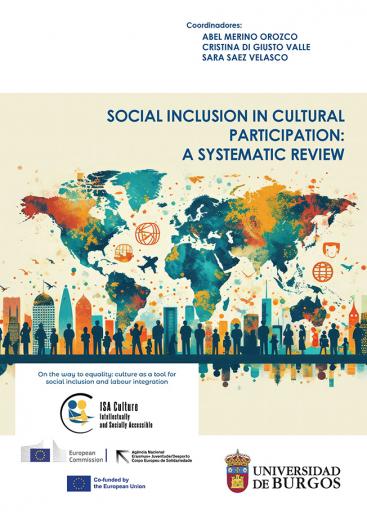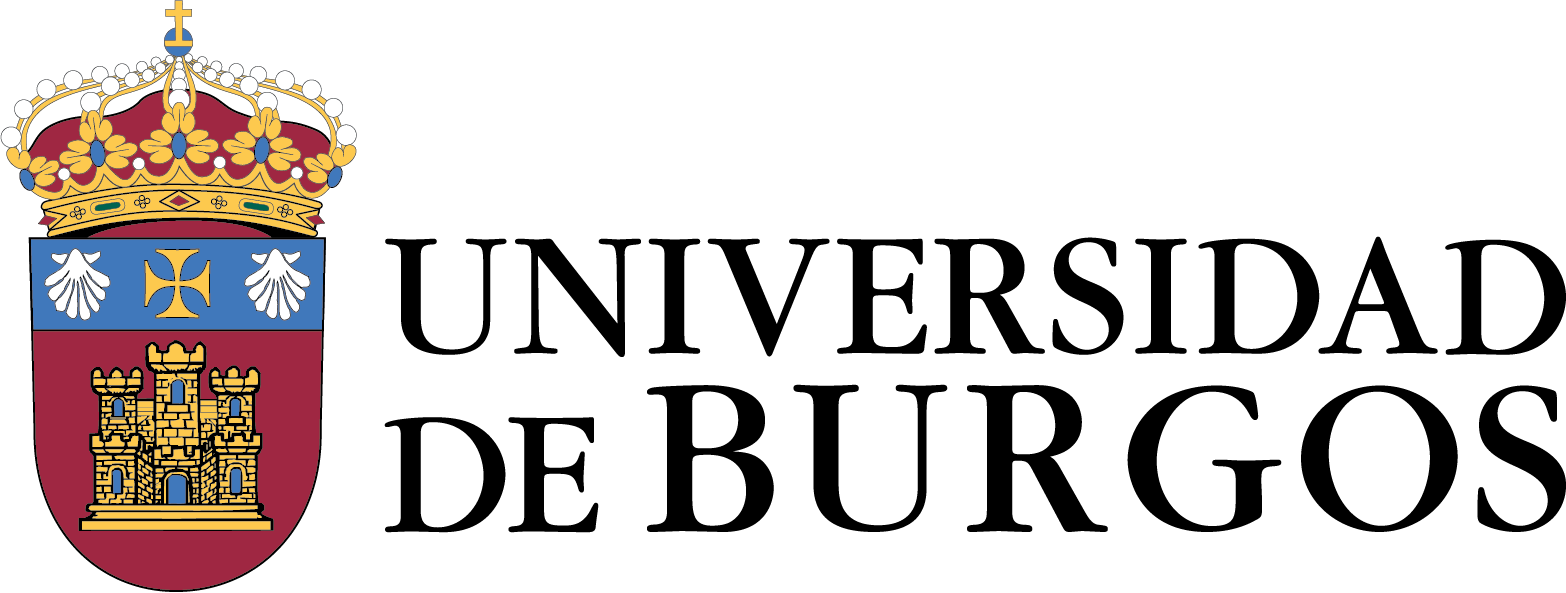Social inclusion in cultural participation: a systematic review
Palabras clave:
inclusión social, accesibilidad cultural, participación activa, identidad cultural, desigualdades socialesSinopsis
Esta obra recoge una revisión sistemática que tiene como objetivo abordar la exclusión en el acceso cultural, especialmente para grupos socialmente y/o intelectualmente vulnerables, a fin de contribuir a la inclusión social y la participación activa. Se propone diagnosticar factores de exclusión en el acceso cultural, reflexionar sobre modelos de inclusión, entender el papel de la cultura en la reestructuración de la identidad y autonomía, e identificar mejores prácticas en accesibilidad intelectual y social.
Se realizó una exhaustiva búsqueda en las bases de datos Web of Science y Scopus, profundizando en 37 estudios seleccionados. Estos estudios se categorizaron en cinco áreas de análisis: Acceso a la cultura para personas con discapacidad, Políticas culturales y participación (barreras y facilitadores), Salud y/o bienestar y participación cultural, Diversidad cultural y participación y Acceso a la cultura para todos. Las principales conclusiones del trabajo subrayan la dinamización de políticas inclusivas y de accesibilidad como pilares fundamentales para una sociedad equitativa, que repercuten en la mejora de la salud pública, bienestar y construcción de las identidades culturales.
Descargas
Resumen 965
Citas
Adamsen, C., Manson, S. M., & Jiang, L. (2021). The association of cultural participation and social engagement with self-reported diagnosis of memory problems among American Indian and Alaska Native elders. Journal of aging and health, 33(7-8_suppl), 60S-67S. https://doi.org/10.1177/08982643211014971
Agovino, M., Crociata, A., Quaglione, D., Sacco, P., & Sarra, A. (2017). Good taste tastes good. Cultural capital as a determinant of organic food purchase by Italian consumers: Evidence and policy implications. Ecological Economics, 141, 66-75. https://doi.org/10.1016/j.ecolecon.2017.05.029
Aguilera, R. (2014). ¿Revisión sistemática, revisión narrativa o metaanálisis? Revista de la Sociedad Española del Dolor, 21(6), 359-360. https://doi.org/10.4321/S1134-80462014000600010
Banks, P. A. (2010). Black cultural advancement: racial identity and participation in the arts among the black middle class. Ethnic and racial studies, 33(2), 272-289. https://doi.org/10.1080/01419870903121332
Bernardo, L. D., & Carvalho, C. R. A. D. (2020). The role of cultural engagement for older adults: an integrative review of scientific literature. Revista Brasileira de Geriatria e Gerontologia, 23. https://doi.org/10.1590/1981-22562020023.190141
Campagna, D., Caperna, G. & Montalto, V. (2020). Does Culture Make a Better Citizen? Exploring the Relationship Between Cultural and Civic Participation in Italy. Social Indicator Research, 149, 657-686. https://doi.org/10.1007/s11205-020-02265-3
Cocozza, S., Sacco, PL, Matarese, G., Maffulli, GD, Maffulli, N., & Tramontano, D. (2020). Participation to Leisure Activities and Well-Being in a Group of Residents of Naples-Italy: The Role of Resilience. International Journal of Environmental Research and Public Health, 17(1895). https://doi.org/10.3390/ijerph17061895
Coleman, J. (1988). Social capital in the creation of human capital. American Journal of Sociology, 94, S95-S120. https://doi.org/10.1086/228943
Currie, C. L., Wild, T. C., Schopflocher, D. P., Laing, L., & Veugelers, P. (2013). Illicit and prescription drug problems among urban Aboriginal adults in Canada: the role of traditional culture in protection and resilience. Social science & medicine (1982), 88, 1-9. https://doi.org/10.1016/j.socscimed.2013.03.032
Cuypers K, Krokstad S, Lingaas Holmen T, et al. (2012). Patterns of receptive and creative cultural activities and their association with perceived health, anxiety, depression and satisfaction with life among adults: the HUNT study. Norway Journal of Epidemiology and Community Health, 66, 698-703. https://doi.org/10.1136/jech.2010.113571
Dillenburger, K., McKerr, L., Jordan, J. A., Devine, P., & Keenan, M. (2015). Creating an inclusive society… How close are we in relation to Autism Spectrum Disorder? A general population survey. Journal of Applied Research in Intellectual Disabilities, 28(4), 330-340. https://doi.org/10.1111/jar.12144
Dubiel, M. (2023). National Theatre in My Kitchen: Access to Culture for Blind People in Poland During Covid‐ 19. Social Inclusion, 11(1), 72-81. https://doi.org/10.17645/si.v11i1.5741
Ferreira, I., Urrútia, G. & Alonso-Coello, P. (2011). Revisiones sistemáticas y metaanálisis: bases conceptuales e interpretación. Revista española de cardiología, 64(8), 688-696. https://doi.org/10.1016/j.recesp.2011.03.029
Fornasari, F. (2020). Social inclusion and museum. Communities, places, narratives. European Journal of Creative Practices in Cities and Landscapes, 3(2), 159-185. https://doi.org/10.6092/issn.2612-0496/12588
Gigerl, M., Sanahuja-Gavaldà, J.M., Petrinska-Labudovikj, R., Moron-Velasco, M., Rojas-Pernia, S., & Tragatschnig, U. (2022). Collaboration between schools and museums for inclusive cultural education: Findings from the INARTdis-project. Frontiers in Education, 7. https://doi.org/10.3389/feduc.2022.979260
Gilroy, J., & Emerson, E. (2016). Australian indigenous children with low cognitive ability: family and cultural participation. Research in developmental disabilities, 56, 117-127. https://doi.org/10.1016/j.ridd.2016.05.011
Giovanis, E. (2021). Participation in socio-cultural activities and subjective well-being of natives and migrants: Evidence from Germany and the UK. International Review of Economics, 68(4), 423-463. https://doi.org/10.1007/s12232-021-00377-x
Giovanis, E., & Akdede, S.H. (2021). Integration Policies in Spain and Sweden: Do They Matter for Migrants' Economic Integration and Socio-Cultural Participation? SAGE Open, 11(4). https://doi.org/10.1177/21582440211054476
Giovanis, E., & Akdede, S.H. (2022). Well-being of old natives and immigrants in Europe: does the socio-cultural integration matter?. International Journal of Happiness and Development, 7(4), 291-330. https://doi.org/10.1504/IJHD.2022.128020
Gohn, M.G. (2019). Teorias sobre a participação social: desafios para a compreensão das desigualdades sociais. Caderno CrH, 32, 63-81. https://doi.org/10.9771/ccrh.v32i85.27655
González, J., Buñuel, J.C., & Aparicio, M. (2011). Listas guía de comprobación de revisiones sistemáticas y metaanálisis: declaración PRISMA. Evidencias en pediatría 7, 20.
Hallmann, K., Artime, C. M., Breuer, C., Dallmeyer, S., & Metz, M. (2017). Leisure participation: modelling the decision to engage in sports and culture. Journal of Cultural Economics, 41(4), 467-487. https://www.jstor.org/stable/48698175
Iñiguez-Berrozpe, T., Elboj-Saso, C., Flecha, A., & Marcaletti, F. (2020). Benefits of Adult Education Participation for Low-Educated Women. Adult Education Quarterly, 70(1), 64-88. https://doi.org/10.1177/0741713619870793
Kitchenham, B. (2004). Procedures for performing systematic reviews. Keele, UK, Keele University, 33, 1-26.
Kraaykamp, G., Notten, N., & Bekhuis, H. (2015). Highbrow cultural participation of turks and moroccans in the Netherlands: testing an identification and social network explanation. Cultural Trends, 24(4), 286-298. https://doi.org/10.1080/09548963.2015.1088120
Leahy, A., & Ferri, D. (2022). Barriers and Facilitators to Cultural Participation by People with Disabilities: A Narrative Literature Review. Scandinavian Journal of Disability Research 24(1), 68-81. https://doi.org/10.16993/sjdr.863
Løkken, B.I., Merom, D., Sund, E.R., Krokstad S, & Rangul, V. (2021) Association of engagement in cultural activities with cause-specific mortality determined through an eight-year follow up: The HUNT Study, Norway. PLoS ONE 16(3), Article e0248332. https://doi.org/10.1371/journal.pone.0248332
Lokken, B.I., Merom, D., Sund, E.R., Krokstad, S., & Rangul, V. (2020). Cultural participation and all-cause mortality, with possible gender differences: an 8-year follow-up in the HUNT Study, Norway. Journal of Epidemiology and Community Health, 74(8), 624-630. https://doi.org/10.1136/jech-2019-213313
Mak, H.W., & Fancourt, D. (2021). Do socio-demographic factors predict children's engagement in arts and culture? Comparisons of in-school and out-of-school participation in the Taking Part Survey. PloS one, 16(2), e0246936. https://doi.org/10.1371/journal.pone.0246936
McAndrew, S., & Richards, L. (2020). Religiosity, Secular Participation, and Cultural Socialization: A Case Study of the 1933-1942 Urban English Cohort. Journal for the Scientific Study of Religion, 59(2), 247-268. https://doi.org/10.1111/jssr.12649
Moghadam, V. M., & Senftova, L. (2005). Measuring women's empowerment: participation and rights in civil, political, social, economic, and cultural domains. International Social Science Journal, 57(184), 389-412. https://doi.org/10.1111/j.1468-2451.2005.00557.x
Moher, D., Liberati, A., Tetzlaff, J. & Altman, D.G. (2010). Preferred reporting items for systematic reviews and meta‐analyses: The PRISMA statement. International Journal of Surgery, 8(5), 336-341. https://doi.org/10.1016/j.ijsu.2010.02.007
Nappo, N.; Fiorillo, D. (2020). Volunteering and self-perceived individual health Cross-country evidence from nine European Countries. International Journal of Social Economics, 47(3), 285-314. https://doi.org/10.1108/IJSE-11-2017-0548
Narciso, D., Pádua, L., Adão, T., Peres, E., & Magalhães, L. (2015). Mixar mobile prototype: Visualizing virtually reconstructed ancient structures in situ. Procedia Computer Science, 64, 852-861. https://doi.org/10.1016/j.procs.2015.08.638
O'Brien, G. T. (2017). Small and slow is beautiful: well-being, 'socially connective retail'and the independent bookshop. Social & Cultural Geography, 18(4), 573-595. https://doi.org/10.1080/14649365.2016.1199814
Putnam, R. (2000) Bowling alone: The collapse and revival of American community. Simon & Schuster.
Reyes-Martínez, J., Takeuchi, D., Martínez-Martínez, O. A., & Lombe, M. (2021). The role of cultural participation on subjective well-being in Mexico. Applied Research in Quality of Life, 16(3), 1321-1341. https://doi.org/10.1007/s11482-020-09811-8
Sabatini, S., Martyr,A., Gamble, L.D., Jones, I.R., Collins, R. ,Matthews, F.E., Knapp, M., Thom, J.M., Henderson, C., Victor, C., & Clare, L. (2023). Are profiles of social, cultural, and economic capital related to living well with dementia? Longitudinal findings from the IDEAL programme. Social Science & Medicine, 317. https://doi.org/10.1016/j.socscimed.2022.115603
Sabirón, F. (2006). Métodos de investigación etnográfica en Ciencias Sociales. Zaragoza: Mira.
Šubic, N., & Ferri, D. (2023). National disability strategies as rights based cultural policy tools. International Journal of Cultural Policy, 29(4), 467-483, https://doi.org/10.1080/10286632.2022.2053960
Tawagi, A. L., & Mak, A. S. (2015). Cultural inclusiveness contributing to international students' intercultural attitudes: Mediating role of intergroup contact variables. Journal of Community & Applied Social Psychology, 25(4), 340-354. https://doi.org/10.1002/casp.2218
Theben, A., Aranda, D., Lupiáñez Villanueva, F., & Porcu, F. (2021). Participación y ciudadanía activa de los jóvenes a través de Internet y las redes sociales. Un estudio internacional. BiD: textos universitaris de biblioteconomia i documentació, 46. https://dx.doi.org/10.1344/BiD2020.46.02
Urrutia, G. & Bonfill, X. (2010). Declaración PRISMA: una propuesta para mejorar la publicación de revisiones sistemáticas y metaanálisis. Medicina Clínica, 135(11), 507-511. https://doi.org/10.1016/j.medcli.2010.01.015
Van Campen, C., & Iedema, J. (2007). Are persons with physical disabilities who participate in society healthier and happier? Structural equation modelling of objective participation and subjective well-being. Quality of Life Research, 16(4), 635-645. https://doi.org/10.1007/s11136-006-9147-3
Vargas-Pineda D.R., & López-Hernández O. (2020). Experiencias de artistas con discapacidad frente a la promoción de la inclusión social. Arte, Individuo y Sociedad, 32(1), 31-44. https://doi.org/10.5209/aris.60622
Verano, R.D. (2015). Guías mínimas para reportar estudios aleatorizados (CONSORT) y revisiones sistemáticas y metaanálisis (PRISMA). Acta Médica Colombiana, 40(2), 16-20. https://doi.org/10.36104/amc.2015.667
Węziak-Białowolska, D. (2016). Attendance of cultural events and involvement with the arts-impact evaluation on health and well-being from a Swiss household panel survey. Public Health, 139, 161-169. https://doi.org/10.1016/j.puhe.2016.06.028

Publicado
Categorías
Licencia

Esta obra está bajo una licencia internacional Creative Commons Atribución-NoComercial-SinDerivadas 4.0.







